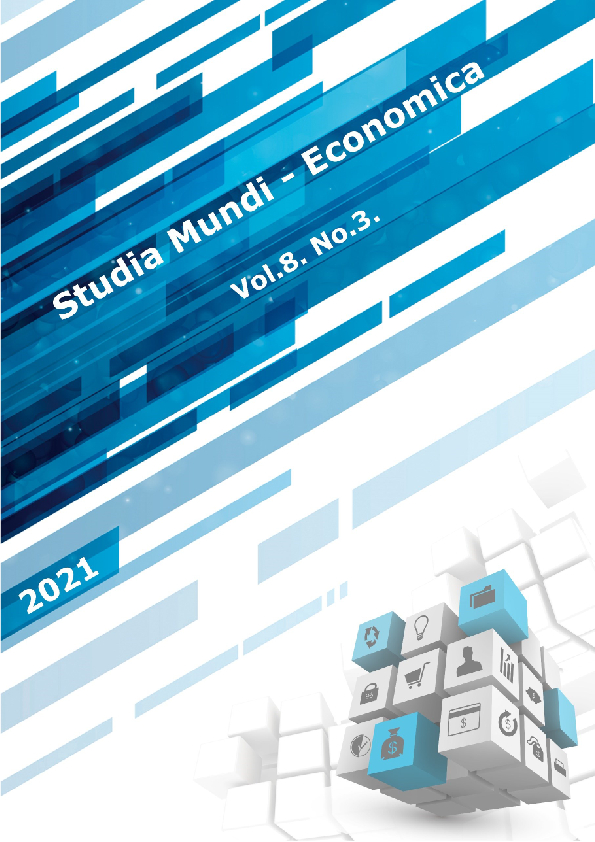Changes in the territorial distribution of population and job seekers with higher education in Hungary
DOI:
https://doi.org/10.18531/Studia.Mundi.2021.08.03.117-130Schlagwörter:
higher education, unemployed, location quotient, territorial autocorrelationAbstract
The study uses different statistical methods to examine the change in the territorial distribution and concentration of the tertiary-educated population and the unemployed between 2001 and 2019. Among the known regional inequality indicators measuring regional disparities, the Dual index and the Hoover index were used. With the help of the location quotient (LQ), the representation of those with higher education in relation to the average was explored and represented at the settlement level. Territorial autocorrelation was performed to more complexly examine the distribution and concentration of tertiary graduates within the population and the unemployed. Spatial neighborhood impact was analyzed using the Global and Local Moran Index. The autocorrelation confirmed regular spatial arrangements in the spatial distribution of tertiary graduates. The study explores whether different weighting of raw data affects the result of autocorrelation, furthermore determines the differences between the location quotient and the GIS representation of Local Moran I.
Literaturhinweise
Acemoglu D. (2008): Introduction to Modern Economic Growth. Princeton University Press, New Yersey, ISBN 9781400835775
Aghion de B. A. – Durlauf, J. (2005): Handbook of Economic Growth. Elsevier. Amsterdam, ISBN 9780444520418
Anselin L. (1995): Local Indicators of Spatial Association—LISA. Geographical Analysis. Vol. 27. No. 2. DOI: https://doi.org/10.1111/j.1538-4632.1995.tb00338.x
Capello R. (2007): A forecasting territorial model of regional growth: the MASST model. The Annals of Regional Science. Vol. 41. No. 4. 753–787. p. DOI: https://doi.org/10.1007/s00168-007-0146-2 ; ISSN 1742-1780
Dusek T. (2004): A területi elemzések alapjai. In: ELTE TTK Regionális Földrajzi Tanszék, Regionális Tudományi Tanulmányok 10., Budapest.
Dusek T. (2013): A területi statisztika egyes térparamétereket használó elemzési eszközei. In: Széchenyi István Egyetem, Regionális- és Gazdaságtudományi Doktori Iskola, Habilitációs értekezés, Győr.
Dusek T. – Kotosz B. (2016): Területi statisztika. Akadémiai Kiadó, Budapest, ISBN 9789634540014
Egri Z. (2017): Magyarország városai közötti egészségegyenlőtlenségek. Területi Statisztika. 2017, Vol. 57. No. 5. 537–575. p. DOI: https://doi.org/10.15196/TS570504 ; ISSN 2064- 8251
Egri Z. – Kőszegi I. R. (2018): A gazdasági-társadalmi (komplex) térszerkezet kelet-közép-európai képe. Területi Statisztika. Vol. 58. No. 1. 27–56. p., DOI: https://doi.org/10.15196/TS580102 ; ISSN 2064-8251
Egri Z. – Tánczos T. (2016): Spatial Layers and Spatial Structure in Central and Eastern Europe. Regional Statistics. Vol. 5. No. 2. 34–61. p. ISSN 2064-8251
Gecse G. – Nikodémus A. (2003): A hazai klaszterek lehatárolásának problémái – lokációs hányados. Területi Statisztika. Vol. 6. No. 6. 507–522. p. ISSN 0018-7828
Hajdú D. (2020): A munkanélküliség és felnőttképzés területi eloszlása az Észak magyarországi régióban. Észak-magyarországi Stratégiai Füzetek. Vol. 17. No. 2. 62- 69. p. DOI: https://doi.org/10.32976/stratfuz.2020.14 ; ISSN 2560-2926
Kiss J. P. – Németh N. (2006): Fejlettség és egyenlőtlenségek – Magyarország megyéinek és kistérségeinek esete. In: Magyar Tudományos Akadémia Közgazdaságtudományi Intézet, Budapest. 40. p. ISBN 9789639588929
Kiss J. P. – Tagai G. – Telbisz E. (2008): A szürkeállomány területi különbségei – katedrán innen és túl. Területi Statisztika. Vol. 48. No. 3. 315–333. p. DOI: https://doi.org/10.15196/TS580602
Lengyel I. (2010): Regionális gazdaságfejlesztés. Versenyképesség, klaszterek és alulról szerveződő stratégiák. Budapest, Akadémiai Kiadó. ISBN 9789630588379
Nagy H. – Illes B. – Kaposzta J – Donnik I. (2017): Clusters and concentration of businesses in regions of some european countries as tools for economic development. In: 16th International Scientific Conference – Engineering for Rural Development. 248–253 p. DOI: https://doi.org/10.22616/ERDev2017.16.N048 ; ISSN 1691-5976
Nemes Nagy J. ed. (2005): Regionális elemzési módszerek. In: ELTE Regionális Földrajzi Tanszék, Budapest. (Regionális Tudományi Tanulmányok, 11.)
Romer, P. M. (1990): Endogenous Technological Change. Journal of Political Economy. Vol. 98. No. 5. S71–S102. p.
Romer P. M. (1994): The origins of endogenous growth. The Journal of Economic Perspectives., Vol. 8. No. 1. 3–22. p., DOI: http://doi.org/10.1257/jep.8.1.3 ; ISSN 1944-7965
Sánta É – Szakálné Kanó I. – Lengyel I. (2015): Csökkennek az iskolázottság területi egyenlőtlenségei? A felsőfokú végzettségűek területi eloszlása a népszámlálások adatai alapján. Területi Statisztika. Vol. 55. No. 6. 541-555. p.
Szakálné Kanó I. (2011): A gazdasági aktivitás térbeli eloszlásának vizsgálati lehetőségei. Statisztikai Szemle. Vol. 89. No. 1. 77–100. p.
Szakálné Kanó I. (2017): Gazdasági tevékenységek térbeli eloszlásának vizsgálata. JATEPress, Szeged, ISBN 9789633153376
Szakálné Kanó I – Kazemi-Sánta É – Lengyel I. (2018): A felsőfokú végzettségűek területi eloszlásának alakulása Magyarországon. In: Lengyel I. (ed.) 2018: Térségek növekedése és fejlődése. JATEPress, Szeged, 174–196. p.
Tóth G (2003): Területi autokorrelációs vizsgálat a Local Moran I módszerével. Tér és Társadalom. Vol. 17. No. 4. 39-49. p. ISSN 2062-9923
Vas Zs. (2009): Közelség és regionális klaszterek: a szoftveripar Szegeden. Tér és Társadalom. Vol. 23. No. 3. 127–145. p. DOI: https://doi.org/10.17649/TET.23.3.1261 ; ISSN 0237- 7683
Vas Zs. – Lengyel I. – Szakálné Kanó I. (2015): Regionális klaszterek és agglomerációs előnyök: feldolgozóipar a magyar városrégiókban. Tér és Társadalom. Vol. 29. No. 3. 49-72. p., DOI: https://doi.org/10.17649/TET.29.3.2697 ;ISSN 0237-7683 27.
Varga A. (2009): Térszerkezet és gazdasági növekedés. Akadémiai Kiadó, Budapest. ISBN 0109002625423 28.
Zhang D. (2017): A Coefficient of Determination for Generalized Linear Models. The American Statistician. Vol. 71. No. 4. 310-316. p. DOI: https://doi.org/10.1080/00031305.2016.1256839
Downloads
Veröffentlicht
Ausgabe
Rubrik
Lizenz
Copyright (c) 2021 Tímea Győri

Dieses Werk steht unter der Lizenz Creative Commons Namensnennung - Nicht-kommerziell - Keine Bearbeitungen 4.0 International.
A folyóirat Open Access (Gold). Cikkeire a Creative Commons 4.0 standard licenc alábbi típusa vonatkozik: CC-BY-NC-ND-4.0. Ennek értelmében a mű szabadon másolható, terjeszthető, bemutatható és előadható, azonban nem használható fel kereskedelmi célokra (NC), továbbá nem módosítható és nem készíthető belőle átdolgozás, származékos mű (ND). A licenc alapján a szerző vagy a jogosult által meghatározott módon fel kell tüntetni a szerző nevét és a szerzői mű címét (BY).






